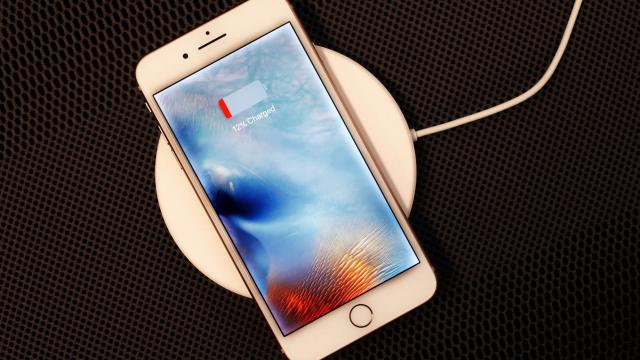Apple has released iOS 11.3.1, which includes what the tech giant says is a fix for an issue where people who used third-party repair services to replace their displays had their devices become unresponsive.
An iPhone 8. Photo: AP
According to release notes, “iOS 11.3.1 improves the security of your iPhone or iPad and addresses an issue where touch input was unresponsive on some iPhone 8 devices because they were serviced with non-genuine replacement displays”. Variants of this issue have apparently been floating around for quite some time – in 2017, an iOS update temporarily killed touchscreen functionality for some iPhone 7 users, and earlier this year, iOS 11.3 did the same with iPhone 8 models.
PSA: iOS 11.3.1 fixes issues with 3rd party display replacements https://t.co/61EV6aJobS pic.twitter.com/0p6mR2LYX7
— Guilherme Rambo (@_inside) April 24, 2018
Retailers and customers alike suspected that Apple was deliberately letting the issue and other malfunctions that arose from replacing other components go unresolved in some sort of ploy to pressure customers into paying for officially licensed repair services that are more expensive.
“It’s very easy to go down the rabbit hole of thinking that Apple is trying to make it JUST inconvenient enough to even consider third-party repair a reliable option,” RepairMapr founder Kev Notton wrote to Motherboard. “That terrifies me, because they’re the manufacturer. Ultimately, they hold all the cards.”
It’s possible that some users indeed were forced to shell out a fair chunk of change to Apple for official repairs, in which case they might justifiably be angry that this was an issue that could be resolved with an update.
iOS 11 was notoriously buggy after its release, and Apple has devoted so much effort to bug-fixing that this year’s iOS 12 update will reportedly have fewer new features.
Though Apple says the 11.3.1 fix will work, it also warned people to please not use third-party repair shops:
Note: Non-genuine replacement displays may have compromised visual quality and may fail to work correctly. Apple-certified screen repairs are performed by trusted experts who use genuine Apple parts. See support.apple.com for more information.
Apple only relented on its policy that third-party screen repairs would void a device’s warranty warned six major companies which sell “automobiles, cellular devices, and video gaming systems” that placing warranty restrictions on third-party repairs is illegal in the US:
Despite the inclusion of such warnings, most of the restrictive policies produced by manufacturers are completely unenforceable. The 1975 Magnuson-Moss Warranty Act prohibits manufacturers from placing repair restrictions on any device it offers a warranty on. According to the FTC, unless the manufacturer provides the parts or services to the consumer for free or receives a waiver, it cannot require customers to comply with specific repair requirements or risk voiding the warranty.
In 2016, another issue related to bad soldering resulted in iPhone 6 and 6 Plus phones losing touchscreen functionality. Apple eventually blamed the issue on phones “being dropped multiple times on a hard surface” and being subject to “further stress”, saying customers experiencing it could pay them $228.95 to repair the devices.
Other changes in the 11.3.1 update fix security vulnerabilities that allowed applications to gain “elevated privileges”, as well as one in which “processing maliciously crafted text message may lead to UI spoofing,” per Ars Technica.
[9to5Mac]
